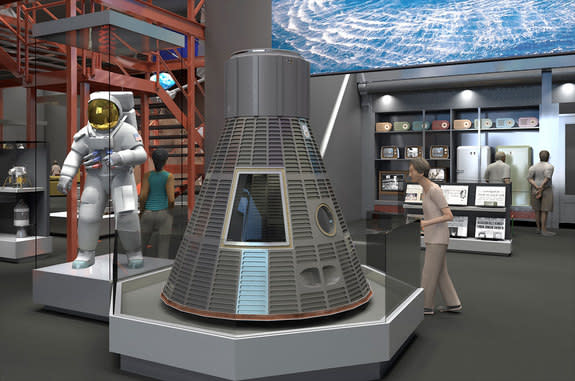Smithsonian's 1st Kickstarter Raises $720,000 to 'Reboot' Spacesuits
The spacesuits worn by the first man to walk on the moon and the first American to fly in space will now be "conserved, digitized and displayed" thanks to the nearly 9,500 people who donated to the Smithsonian's first-ever Kickstarter campaign.
"Thanks to all of you, we did it!" exclaimed the spacesuits' curators and conservators at the National Air and Space Museum in Washington, D.C. "We hope you are as proud as we are to be a part of this mission."
The museum's "Reboot the Suit" crowd-funding campaign successfully raised a total of $719,779 – almost $220,000 more than its goal of $500,000 to research and display the spacesuit that moonwalker Neil Armstrong wore during the Apollo 11 mission in July 1969. [The Voyage of Apollo 11 in Pictures]
By exceeding the Smithsonian's stretch goal of $700,000, the campaign also funded the conservation and exhibit of the silver pressure suit worn by original Mercury astronaut Alan Shepard on NASA's first crewed spaceflight in 1961.
"[Armstrong's and Shepard's suits] will now be conserved, digitized and displayed in the upcoming 'Destination Moon' exhibition," museum officials wrote in an email sent to the campaign's backers. "We accomplished this together, and we'll make sure [the] spacesuits are accessible to inspire generations to come."
A new state-of-the-art exhibition, "Destination Moon" is set to replace the "Apollo to the Moon" gallery at the National Air and Space Museum when it opens in 2020. In addition to their spacesuits, the new hall will also feature Shepard's Mercury capsule "Freedom 7" and the Apollo 11 command module "Columbia" that Armstrong flew to the moon.
"Destination Moon" is intended to "bring the exciting story of lunar exploration" to the new generations of visitors who were born in the decades after the historic moon landings, according to the Smithsonian's website.
Armstrong's white spacesuit has been off of public display since 2006 undergoing preservation. Though it succeeded at protecting the astronaut from the extreme environment of space, it was not designed to survive the test of time. Over the past four decades on Earth, the suit's component materials have begun to break down.
The conservation now possible thanks to the "Reboot the Suit" campaign will meticulously detail the condition of the suit's many layers using the latest imaging technology. It will also inform the museum's staff on the best methods of display by which to return it to public view just in time for the 50th anniversary of the Apollo 11 mission in 2019.
Shepard's iconic silver spacesuit is currently on exhibit at the Smithsonian's National Museum of American History. It too will benefit from a conservation before its installation in the "Destination Moon" gallery.
Both iconic spacesuits will be digitally scanned so that 3D models of the garments can be utilized by educators, their students and the public.
The "Reboot the Suit" campaign ran on Kickstarter for 30 days beginning on July 20, 46 years to the day after the first moon landing. Most of the supporters chose to either give $20 in return for a cling-on decal of a bootprint on the moon or $55 for a special mission patch designed by "Star Trek" and NASA designer Mike Okuda.
The latter group will also receive the scan data to 3D print a copy of Armstrong's spacesuit glove.
The backers who gave the most will get to tour the factory where the Apollo spacesuits were originally made, receive a Smithsonian flag that flew onboard the space shuttle, or go behind the scenes to view Neil Armstrong's spacesuit while it is being prepared for display.
Watch the National Air and Space Museum's video thanking supporters for the success of the "Reboot the Suit" campaign on collectSPACE.com.
Follow collectSPACE.com on Facebook and on Twitter at @collectSPACE. Copyright 2015 collectSPACE.com. All rights reserved.
Copyright 2015 SPACE.com, a Purch company. All rights reserved. This material may not be published, broadcast, rewritten or redistributed.



